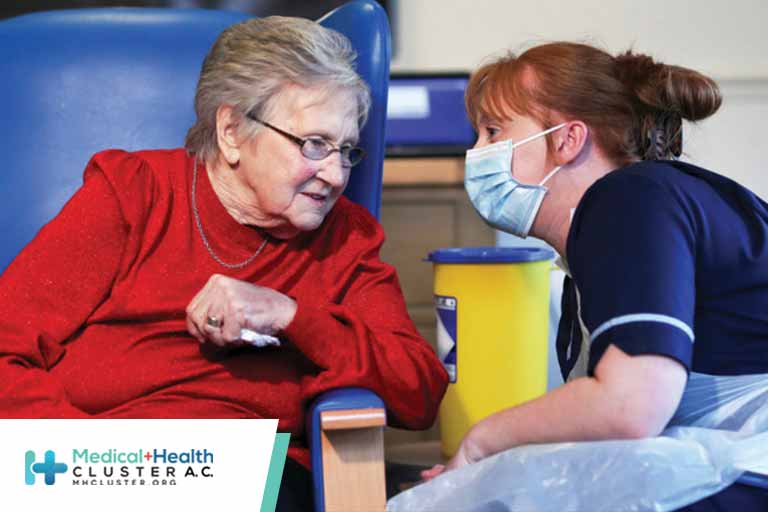En atención a la creciente preocupación sobre la confianza en...
Leer más
Hospital admissions due to COVID-19 in Scotland after one dose of vaccine

The BNT162b2 mRNA vaccine from Pfizer–BioNTech and the ChAdOx1 nCoV-19 vaccine from Oxford–AstraZeneca were the first two products deployed in the UK’s COVID-19 vaccination programme. In accordance with the strategy set by the nation’s Joint Committee on Vaccination and Immunisation (JCVI), vaccines were initially prioritised for care home residents and staff, individuals older than 80 years, and front-line health-care and social care workers. In December, 2020, in response to surging transmission of SARS-CoV-2, JCVI advised delaying the second dose of these vaccines to achieve broader population coverage with the first dose. In The Lancet, Eleftheria Vasileiou and colleagues
Report the interim findings following COVID-19 mass vaccination with a first dose in Scotland. The analysis includes 1 331 993 individuals vaccinated between Dec 8, 2020, and Feb 22, 2021. The authors constructed this comprehensive cohort by linking vaccination, primary care, laboratory testing, hospital admission, and mortality datasets covering 5·4 million people in Scotland. By Feb 22, 2021, an impressive 78·6% of adults aged 80 years and older, 85·9% of adults aged 65–79 years, and 13·9% of adults aged 18–64 years had received at least one dose of the vaccine. Uptake was higher in women than in men, with 35·1% of women and 25·0% of men vaccinated by this date.
Randomised vaccine trials of these products reported only small numbers of severe COVID-19 cases and hospital admissions. In contrast, the real-world data from Scotland captured 723 hospital admissions due to COVID-19 among individuals who had received a first dose of vaccine, and 7854 hospital admissions in unvaccinated individuals. Furthermore, the randomised trials were unable to assess vaccine efficacy in narrow subgroups, such as adults aged 80 years and older, a group prioritised for vaccination.
To estimate vaccine effectiveness, Vasileiou and colleagues compared COVID-19 hospital admissions in vaccinated and unvaccinated individuals who had not previously tested positive with real-time RT-PCR. In observational studies, fundamental differences between vaccinated and unvaccinated populations might occur, reflecting differential access or uptake. To address potential confounding, the authors report model-adjusted and propensity score-weighted estimates, incorporating individual-level data on age, sex, socioeconomic status, calendar time, underlying medical conditions, and number of previous rtPCR tests (as a proxy for exposure risk).
The benefit of vaccines reducing hospital admissions takes time to show in a population. Given the time for an immune response to develop, and the time from infection to onset of disease and progression to severe disease, individuals who were admitted to hospital shortly after their first dose were likely to have been infected before vaccination. Focusing on 28–34 days after a single dose, the authors report an estimated vaccine effect of 91% (95% CI 85–94) for COVID-19 hospital admissions for BNT162b2, and an estimated 88% (75–94) vaccine effect during the same period for ChAdOx1.
Although the first dose of each vaccine probably provides substantial benefit, the exact magnitude and timing are less clear. Estimated vaccine effectiveness during the period 0–6 days after the first dose is 75% (95% CI 71–79) for both vaccines combined, but such a rapid benefit against hospital admission is not plausible. The authors posit that this occurred because individuals were advised to take precautions around the time of vaccination and to defer their appointments if they experienced symptoms or were self-isolating. Per the authors, “the later (>14 days) observed effects are much more likely to be mainly driven by traditional vaccine effects”. However, early differences might also reflect non-transient sources of bias.
Another challenge is in making direct comparisons between the two vaccines, although the authors are cautious not to do so. Because of storage requirements, BNT162b2 was provided mainly through community vaccination centres. The highest uptake was in patients younger than 65 years, including health-care workers. ChAdOx1 was mainly administered at general practices, targeting care home residents and patients aged 80 years and older. ChAdOx1 was also deployed later, available only from Jan 4, 2021, enabling less time for follow-up. Therefore, the sources of bias for the two vaccines might differ. For example, the estimated 7–13 day vaccine effects are much higher for adults aged 65 years and older than for adults aged 18–64 years, even though we expect these to be similarly low. In a study of these two vaccines done by Public Health England, different early vaccine effects were observed before compared with after Jan 4, 2021, potentially reflecting a programmatic shift to vaccinate lower-risk patients.
Large population cohorts support the real-world impact of COVID-19 vaccines. Given the UK’s decision to increase the spacing between doses, longer single-dose person-time follow-up beyond 42 days will be forthcoming and particularly valuable. These assessments rely heavily on observational data, but with the strength of large numbers comes the limitations of bias. Bias-indicator checks, such as estimating effectiveness immediately after vaccination or assessing effectiveness against an unrelated disease, are advisable. The benefits of these vaccines are substantial, and their rapid roll-out is an important achievement for public health.
I declare no competing interests.
Créditos: Comité científico Covid




